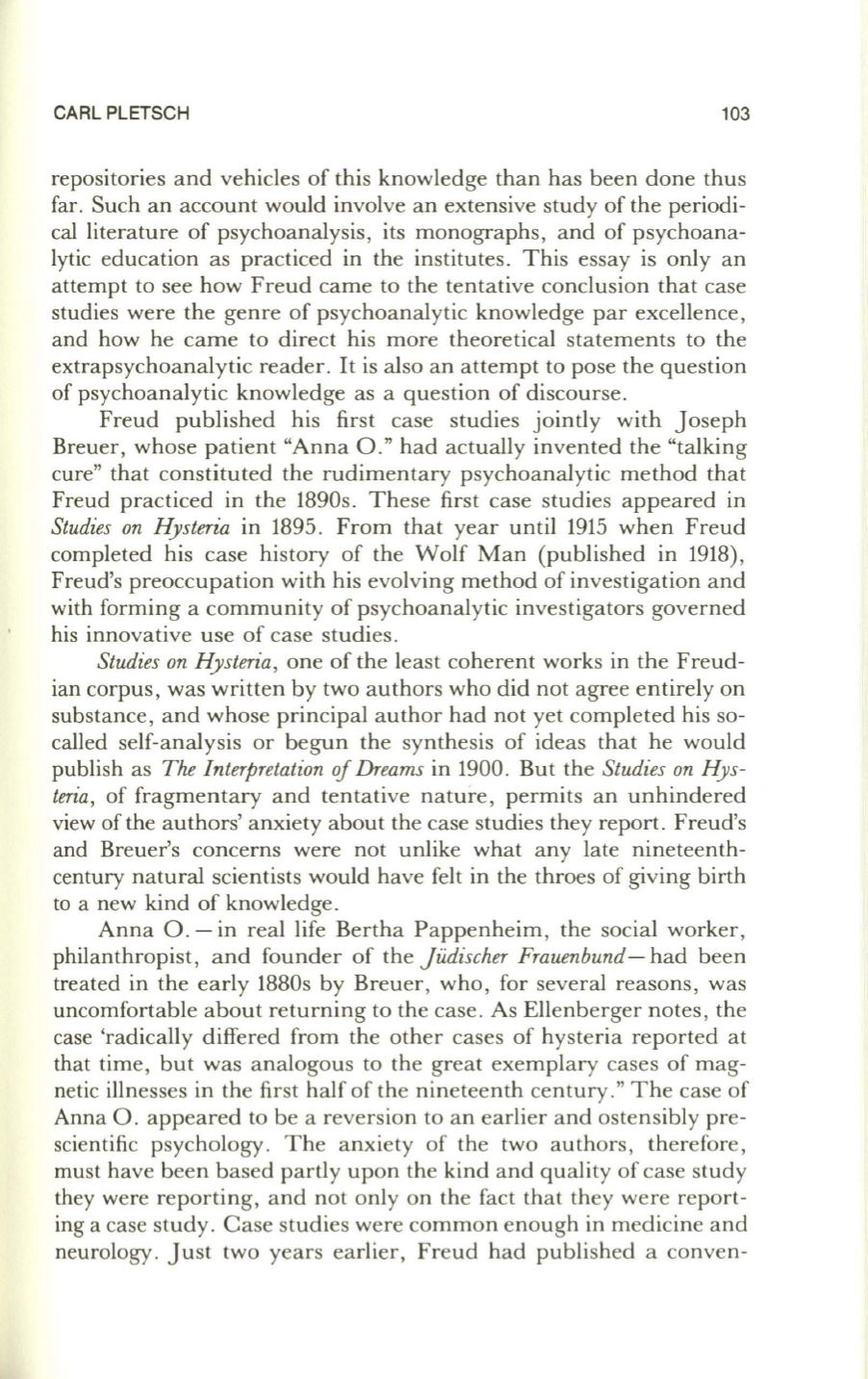
CARL PLETSCH
103
repositories and vehicles of this knowledge than has been done thus
far. Such an account would involve an extensive study of the periodi–
cal literature of psychoanalysis, its monographs, and of psychoana–
lytic education as practiced in the institutes. This essay is only an
attempt to see how Freud came to the tentative conclusion that case
studies were the genre of psychoanalytic knowledge par excellence,
and how he came to direct his more theoretical statements to the
extrapsychoanalytic reader. It is also an attempt to pose the question
of psychoanalytic knowledge as a question of discourse .
Freud published his first case studies jointly with Joseph
Breuer, whose patient "Anna
0 ."
had actually invented the "talking
cure" that constituted the rudimentary psychoanalytic method that
Freud practiced in the 1890s. These first case studies appeared in
Studies on Hysteria
in 1895. From that year until 1915 when Freud
completed his case history of the Wolf Man (published in 1918),
Freud's preoccupation with his evolving method of investigation and
with forming a community of psychoanalytic investigators governed
his innovative use of case studies.
Studies on Hysteria,
one of the least coherent works in the Freud–
ian corpus, was written by two authors who did not agree entirely on
substance, and whose principal author had not yet completed his so–
called self-analysis or begun the synthesis of ideas that he would
publish as
The Interpretation oj Dreams
in 1900. But the
Studies on Hys–
teria,
of fragmentary and tentative nature, permits an unhindered
view of the authors' anxiety about the case studies they report. Freud's
and Breuer's concerns were not unlike what any late nineteenth–
century natural scientists would have felt in the throes of giving birth
to a new kind of knowledge .
Anna O. - in real life Bertha Pappenheim, the social worker,
philanthropist, and founder of the
Judischer Frauenbund
-
had been
treated in the early 1880s by Breuer, who, for several reasons, was
uncomfortable about returning to the case . As Ellenberger notes, the
case 'radically differed from the other cases of hysteria reported at
that time, but was analogous to the great exemplary cases of mag–
netic illnesses in the first half of the nineteenth century ." The case of
Anna O . appeared to be a reversion to an earlier and ostensibly pre–
scientific psychology. The anxiety of the two authors, therefore ,
must have been based partly upon the kind and quality of case study
they were reporting, and not only on the fact that they were report–
ing a case study. Case studies were common enough in medicine and
neurology . Just two years earlier, Freud had published a conven-


